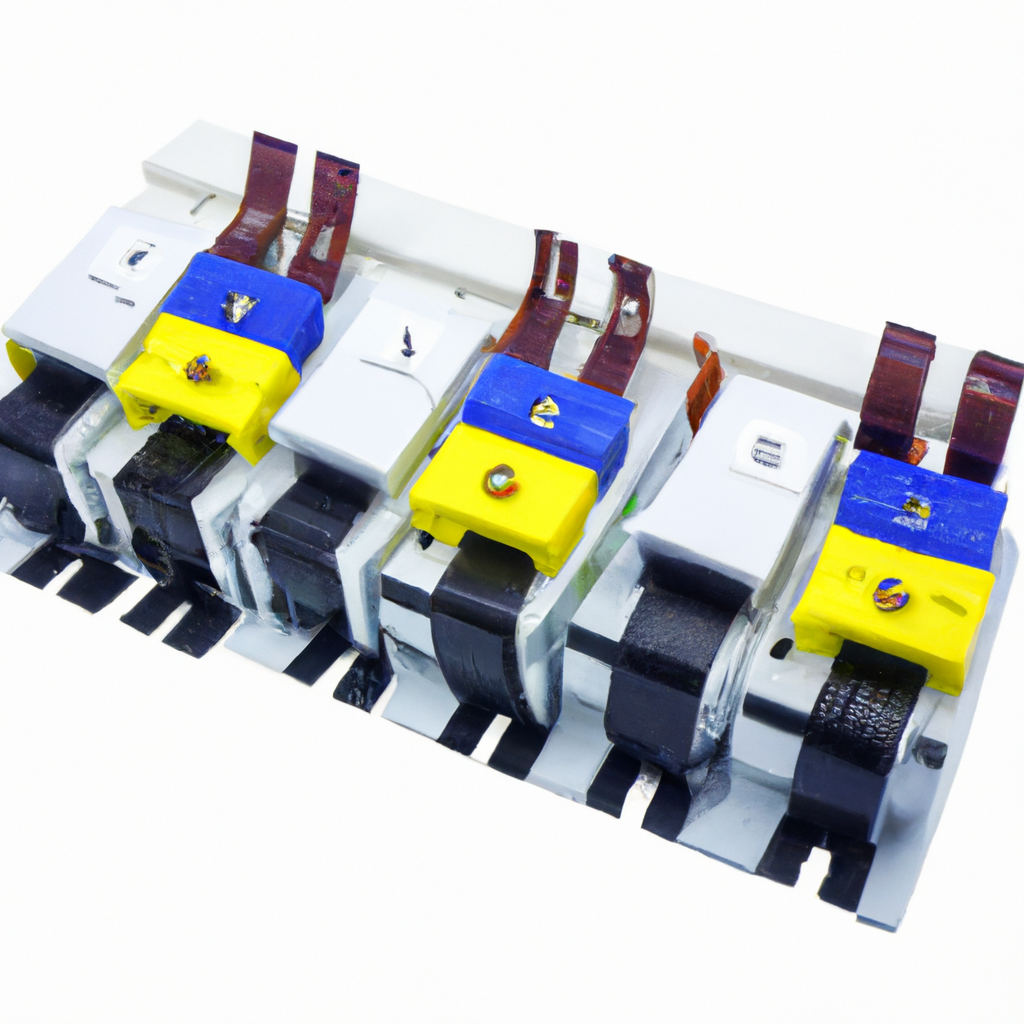Tin tức
The different of Isolator safety relays with instrinsically zenner barrier
“Isolator Safety Relays with Intrinsically Zenner Barrier: Maximum Safety, Maximum Reliability.
Introduction
Nội dung chính
- 1 Introduction
- 2 Exploring the Advantages of Isolator Safety Relays with Intrinsically Zenner Barriers in Hazardous Environments
- 3 Comparing Isolator Safety Relays with Intrinsically Zenner Barriers to Other Safety Relays
- 4 Understanding the Different Types of Isolator Safety Relays with Intrinsically Zenner Barriers
- 5 How Isolator Safety Relays with Intrinsically Zenner Barriers Improve Safety in Industrial Settings
- 6 Exploring the Benefits of Isolator Safety Relays with Intrinsically Zenner Barriers
The Isolator safety relays and Intrinsically Safe Zener Barriers are two important components of a safety system. Isolator safety relays are used to provide a safe electrical isolation between the hazardous and non-hazardous areas of a system. Intrinsically Safe Zener Barriers are used to limit the amount of energy that can be transferred between the hazardous and non-hazardous areas. Both components are important for ensuring the safety of personnel and equipment in hazardous environments. This article will discuss the differences between Isolator safety relays and Intrinsically Safe Zener Barriers, and how they can be used together to create a safe and reliable system.
Exploring the Advantages of Isolator Safety Relays with Intrinsically Zenner Barriers in Hazardous Environments
The use of isolator safety relays with intrinsically safe Zenner barriers in hazardous environments is becoming increasingly popular due to the numerous advantages they offer. Isolator safety relays are designed to provide a safe and reliable means of controlling and monitoring electrical circuits in hazardous areas. They are used to protect personnel and equipment from the risk of electric shock, fire, and explosions.
The use of intrinsically safe Zenner barriers in hazardous environments is a key component of isolator safety relays. These barriers are designed to limit the amount of energy that can be transferred between two circuits, thus preventing the risk of electric shock, fire, and explosions. The Zenner barriers are also designed to be resistant to corrosion and other environmental factors, making them ideal for use in hazardous environments.
The use of isolator safety relays with intrinsically safe Zenner barriers offers several advantages. First, they provide a reliable and safe means of controlling and monitoring electrical circuits in hazardous areas. This ensures that personnel and equipment are protected from the risk of electric shock, fire, and explosions. Second, the Zenner barriers are designed to be resistant to corrosion and other environmental factors, making them ideal for use in hazardous environments. Third, the use of isolator safety relays with intrinsically safe Zenner barriers can reduce the cost of installation and maintenance, as they require less wiring and fewer components.
Finally, the use of isolator safety relays with intrinsically safe Zenner barriers can improve the safety of personnel and equipment in hazardous environments. By limiting the amount of energy that can be transferred between two circuits, the risk of electric shock, fire, and explosions is greatly reduced. This can help to ensure that personnel and equipment are kept safe in hazardous environments.
In conclusion, the use of isolator safety relays with intrinsically safe Zenner barriers in hazardous environments offers numerous advantages. They provide a reliable and safe means of controlling and monitoring electrical circuits in hazardous areas, while also reducing the cost of installation and maintenance. Additionally, they can improve the safety of personnel and equipment in hazardous environments by limiting the amount of energy that can be transferred between two circuits. For these reasons, the use of isolator safety relays with intrinsically safe Zenner barriers is becoming increasingly popular in hazardous environments.
Comparing Isolator Safety Relays with Intrinsically Zenner Barriers to Other Safety Relays
Safety relays are an important component of any industrial system, providing a layer of protection against hazardous conditions. Isolator safety relays and intrinsic safety barriers are two types of safety relays that are commonly used in industrial settings. In this article, we will compare isolator safety relays and intrinsic safety barriers to other types of safety relays.
Isolator safety relays are designed to provide a physical barrier between the hazardous area and the control system. They are typically used in applications where the hazardous area is not intrinsically safe, such as in the presence of flammable gases or liquids. Isolator safety relays are typically used in combination with other safety devices, such as emergency stop buttons, to provide a comprehensive safety system.
Intrinsic safety barriers are designed to limit the amount of energy that can be transferred between the hazardous area and the control system. They are typically used in applications where the hazardous area is intrinsically safe, such as in the presence of dust or combustible fibers. Intrinsic safety barriers are typically used in combination with other safety devices, such as emergency stop buttons, to provide a comprehensive safety system.
Other types of safety relays include contactors, limit switches, and pressure switches. Contactors are used to control the flow of electricity in a circuit, while limit switches and pressure switches are used to detect the presence of hazardous conditions. All of these safety relays are typically used in combination with other safety devices, such as emergency stop buttons, to provide a comprehensive safety system.
In conclusion, isolator safety relays and intrinsic safety barriers are two types of safety relays that are commonly used in industrial settings. They are typically used in combination with other safety devices, such as emergency stop buttons, to provide a comprehensive safety system. Other types of safety relays, such as contactors, limit switches, and pressure switches, are also commonly used in industrial settings. All of these safety relays are designed to provide a layer of protection against hazardous conditions.
Understanding the Different Types of Isolator Safety Relays with Intrinsically Zenner Barriers
Isolator safety relays are an important component of any safety system, providing a reliable and secure way to protect personnel and equipment from hazardous conditions. Intrinsically safe relays with zener barriers are a type of isolator safety relay that is designed to provide a high level of protection against electrical shock and other hazardous conditions. In this article, we will discuss the different types of isolator safety relays with intrinsically zener barriers and how they work.
The first type of isolator safety relay with intrinsically zener barriers is the single-channel relay. This type of relay is designed to provide a single channel of protection, meaning that it will only protect one circuit or device. The single-channel relay is typically used in applications where the risk of electrical shock is low, such as in residential or commercial buildings.
The second type of isolator safety relay with intrinsically zener barriers is the dual-channel relay. This type of relay is designed to provide two channels of protection, meaning that it will protect two circuits or devices. The dual-channel relay is typically used in applications where the risk of electrical shock is higher, such as in industrial or hazardous environments.
The third type of isolator safety relay with intrinsically zener barriers is the multi-channel relay. This type of relay is designed to provide multiple channels of protection, meaning that it will protect multiple circuits or devices. The multi-channel relay is typically used in applications where the risk of electrical shock is very high, such as in medical or military applications.
The fourth type of isolator safety relay with intrinsically zener barriers is the programmable relay. This type of relay is designed to provide a customizable level of protection, meaning that it can be programmed to provide different levels of protection depending on the application. The programmable relay is typically used in applications where the risk of electrical shock is variable, such as in automotive or aerospace applications.
Isolator safety relays with intrinsically zener barriers are an important component of any safety system, providing a reliable and secure way to protect personnel and equipment from hazardous conditions. Understanding the different types of isolator safety relays with intrinsically zener barriers is essential for ensuring the safety of personnel and equipment in any environment.
How Isolator Safety Relays with Intrinsically Zenner Barriers Improve Safety in Industrial Settings
Intrinsically safe safety relays with zener barriers are an important component of industrial safety systems. They are designed to protect personnel and equipment from hazardous conditions, such as electric shock, fire, and explosions. The relays are used to control the flow of electricity in hazardous areas, and the zener barriers provide an additional layer of protection by limiting the amount of current that can flow through the system.
The zener barriers are designed to detect any increase in current and immediately shut off the power supply. This prevents the current from reaching dangerous levels and reduces the risk of electric shock, fire, and explosions. The barriers also help to protect the safety relays from damage due to overcurrents.
The safety relays with zener barriers are also designed to be highly reliable and durable. They are designed to withstand extreme temperatures, vibrations, and other environmental conditions. This ensures that the relays will continue to operate correctly even in harsh industrial settings.
The safety relays with zener barriers are also designed to be easy to install and maintain. They are typically installed in a control panel and require minimal wiring. This makes them easy to integrate into existing systems and reduces the amount of time and money spent on installation and maintenance.
Overall, safety relays with zener barriers are an important component of industrial safety systems. They provide an additional layer of protection against electric shock, fire, and explosions, and are highly reliable and easy to install and maintain. This makes them an ideal choice for industrial settings where safety is a priority.
Exploring the Benefits of Isolator Safety Relays with Intrinsically Zenner Barriers
The use of isolator safety relays with intrinsically safe barriers is becoming increasingly popular in industrial settings. These devices provide a safe and reliable way to protect personnel and equipment from hazardous conditions. Isolator safety relays are designed to detect and isolate any hazardous conditions that may arise in a system, while intrinsically safe barriers are used to prevent the spread of hazardous energy. Together, these two components provide a comprehensive safety solution for industrial applications.
The primary benefit of using isolator safety relays with intrinsically safe barriers is the increased level of safety they provide. Isolator safety relays are designed to detect and isolate any hazardous conditions that may arise in a system, while intrinsically safe barriers are used to prevent the spread of hazardous energy. This combination of components ensures that any hazardous conditions are quickly identified and isolated, preventing any potential harm to personnel or equipment.
In addition to providing increased safety, isolator safety relays with intrinsically safe barriers also offer a number of other benefits. For example, these devices are designed to be highly reliable and durable, making them ideal for use in harsh industrial environments. Furthermore, they are relatively easy to install and maintain, making them a cost-effective solution for many industrial applications.
Finally, isolator safety relays with intrinsically safe barriers are also designed to be compatible with a variety of other safety components, such as emergency stop buttons and safety interlock switches. This allows for a comprehensive safety solution that can be tailored to the specific needs of any industrial application.
In conclusion, isolator safety relays with intrinsically safe barriers offer a number of benefits, including increased safety, reliability, durability, and compatibility with other safety components. These devices are becoming increasingly popular in industrial settings, and are an ideal solution for providing comprehensive safety solutions.

